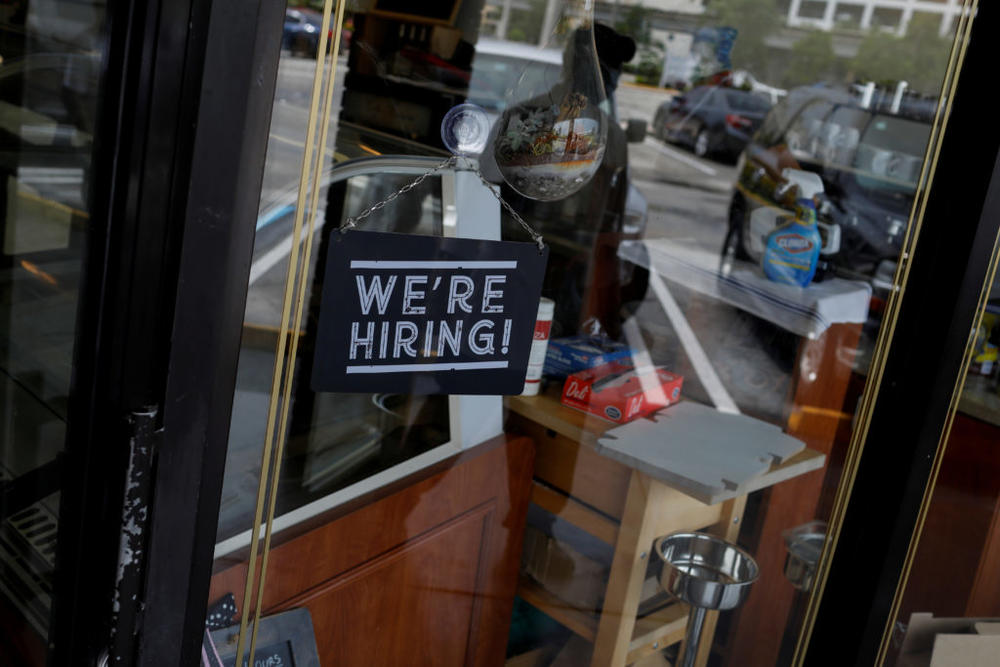
Section Branding
Header Content
Georgia among worst states for workers, report says
Primary Content
LISTEN: GPB's Peter Biello speaks with Kaitlyn Henderson, author of the new Oxfam report, “Best and Worst States to Work in America 2022.”

During the so-called "Great Resignation," workers are leaving their jobs in search of better pay and working conditions. But where should they look for greener pastures? According to a new report from Oxfam, not Georgia. The report finds the state ranks near the bottom of the list when considering its low minimum wage, lack of union protections and new abortion ban. GPB's Peter Biello spoke with Kaitlyn Henderson, the author of the
Oxfam Report
.
Peter Biello: States in the southeastern U.S. fared worst in your ranking — and Georgia is 50th out of 52, which includes D.C. and Puerto Rico. Can you tell us a little bit about the metrics you used in your evaluation?
Kaitlyn Henderson: Absolutely. So this index looks at three big thematic policy spaces, which are wages, worker protections and the right to organize. And in those three themes, we look at 26 different policies for all 50 states, plus D.C. and Puerto Rico. So we're looking at everything from what the minimum wage is, what the tipped wages is to whether there is paid leave in the state. Are there accommodations for pregnant workers? And is the right to unionize protected? And what kind of rights to organize exist at the state level?
Peter Biello: Okay, so there's a lot to unpack there. The full report is
here
. But I wanted to ask you if we could compare apples to apples, to the extent that that is possible, so let's say: a fast food worker in Georgia and a fast food worker in Oregon. Oregon is the state with the top score in your ranking. What are the major differences between the working conditions and that same job in each of those states?
Kaitlyn Henderson: Well, realistically, the conditions are quite drastically different. So the first thing that immediately jumps to mind is someone who works in Oregon, who is a minimum wage fast food worker, is making $13.50 an hour, which is their minimum wage. On the flip side, in Georgia, that same exact worker doing the same exact job is making $7.25. So if someone in Georgia is working full time at any fast food restaurant, they're making about $15,000 a year. That same person in Oregon is making closer to $30,000 a year. So just there alone, the difference is enormous.
Peter Biello: And have you adjusted for buying power for those dollars as well?
Kaitlyn Henderson: In Georgia, $7.25 covers less than 20% of the cost of living for a family of four. So if we're looking at the minimum wage in Oregon, again, $13.50, that same wage covers almost 33 percent of the cost of living. So even adjusted for the cost of living in the state of Georgia or the cost of living in the state of Oregon, it's a pretty stark difference.
Peter Biello: In your analysis of conditions for working women, you paid careful attention to tipped wages. Why is that so important in your analysis?
Kaitlyn Henderson: One of the reasons we're really looking at tipped wages is, for us, this is an issue around gender justice. Something like 60% of tipped wage workers are women and, disproportionately, tipped wage workers are women of color. The tipped wage has been stuck at $2.13 an hour since the early 90s, which is trapping overwhelmingly women and especially women of color in cyclical poverty. A lot of tipped wage workers are parents. So people who are working full time trying to support a family and absolutely unable to do so because of this wage policy. So for us, it's a gender justice issue, but it's also very intersectional because we're thinking about low wage working people. But when it comes to the tipped wage, that's overwhelmingly women and women of color.
Peter Biello: The top 10 states for working women, according to your index, are the same states that have enshrined and protected the right to an abortion. Georgia is not among these states. Can you tell us a little more about the connection between working conditions and having the right to an abortion?
Kaitlyn Henderson: One of the reasons that we were actually interested in the question of what states have protected or not protected the right to an abortion in comparison to our index is because we're looking at policies such as the ability to have paid sick leave or the ability to have paid family leave or the ability to have an accommodation at work when you're pregnant that protects you and keeps you healthy. So what's interesting is the states that don't have any of those protections, which is to say if you are giving birth, you don't have the right to return to your job. You are not entitled to a paycheck during that time. If you or your child gets sick, you don't have the right to take a day off of work without losing your job or while still getting paid. You could potentially be harmed or injured at work because there's not an accommodation while pregnant. So all of these policies, these worker protection policies that specifically and in this case harm women who are pregnant or could become pregnant, are happening at the same states where a woman no longer has the right to choose whether or not to carry their child to term or to get pregnant. So for us, it was just a question of: "Is there a connection?" And what we saw is that, yes, there is.
This interview has been edited for length and clarity.

